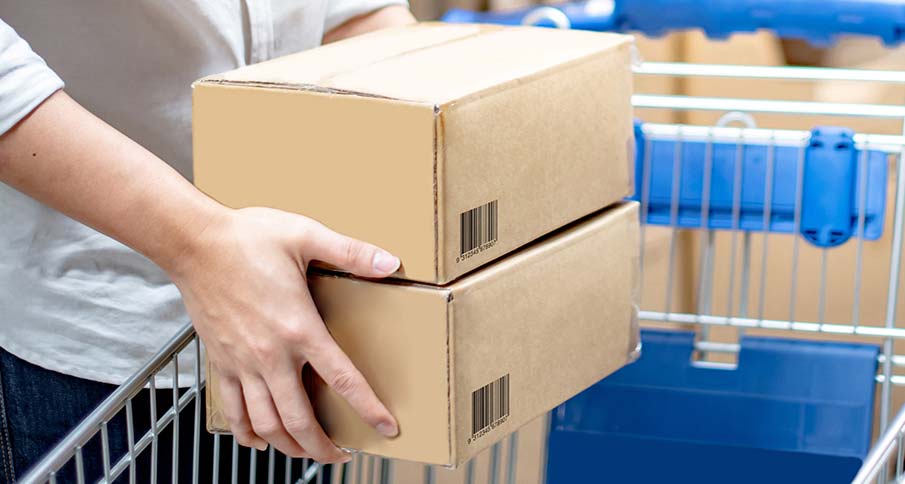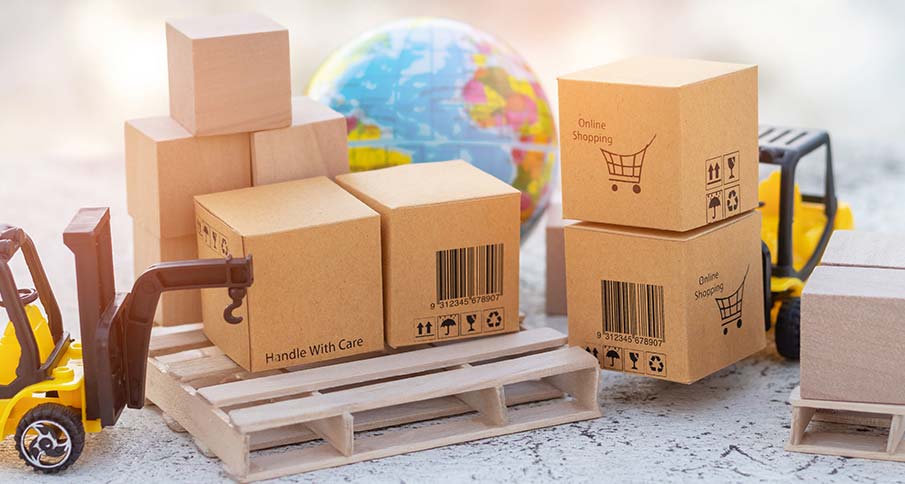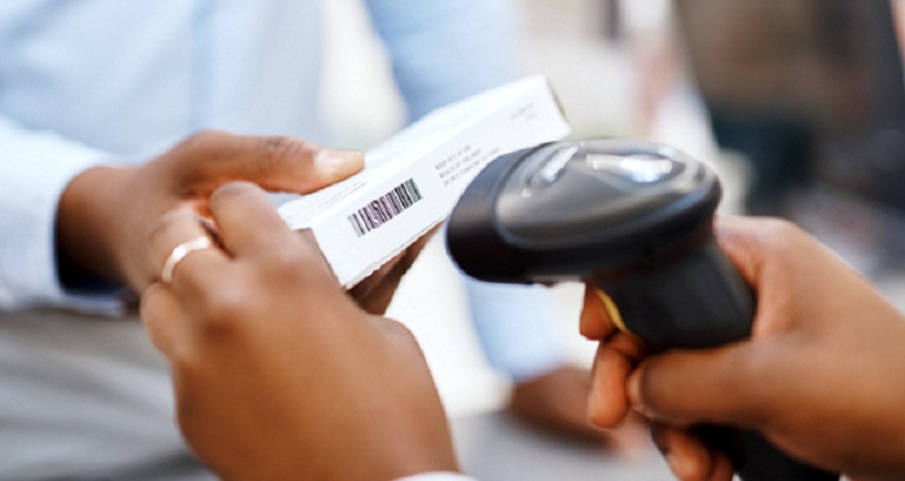Create compliant barcodes for retail point of sale, every time. Our EAN-13 fact sheet breaks down everything you need to know about these barcodes.
The EAN-13 barcode is used more than any other barcode worldwide. The EAN-13 barcode encodes a GTIN-13 and is used to identify individual items at retail point of sale. It can also be used for trade units sold to consumers, e.g. a case of wine.
If you sell trade items, such as cartons and cases, to consumers, you need an EAN-13 on your trade item as well as your carton barcode (ITF-14). For example, you might sell individual bottles of beer as well as slabs of beer.

EAN13 Selling Trade Items
EAN-13 barcodes are used on eCommerce platforms, such as Amazon, eBay and Google. While they are not yet mandatory, using GTINs and barcodes is highly recommended when selling online.

EAN13 Selling Online
EAN-13 barcodes are the most commonly used barcode for retail POS. They are used to track and identify individual consumer items in supermarkets and stores.

An EAN-8 bar code is only intended for use with small consumer units. Woolworths require an EAN-13 if there is sufficient physical area on the consumer unit rather than an EAN-8.
UPC barcodes are the equivalent of EAN barcodes for the United States and Canada. They can be used in the same way, as per GS1 Standards.
The UPC-A barcode encodes the GTIN-12 and does not support attributes. The EAN-13 encodes the GTIN-13 and also does not support attributes. The difference is that US and Canada have a country code of zero, which is not printed under the barcode nor entered in databases. Other countries, like Australia, have specific county codes which form part of the GTIN.
Retail POS: 80% - 200% (X-dimension 0.26mm - 0.66mm). The allowance for X-dimensions between 0.249 mm and 0.26 mm is only applicable to on demand (e.g., thermal, laser) print processes.
General Distribution: 150% - 200% (X-dimension 0.50mm – 0.66mm). (automated scanning). The height and quiet zones depend on the X-dimension.
At 100%, an EAN-13 barcode including the right and left Quiet Zone is 37.29mm wide by 25.93mm high. According to GS1 Australia and retailer standards, you should print your barcode in the range of 80-200% depending on the application.
It depends. To sell your products on Amazon and eBay, you still need to add a Global Trade Item Number (GTIN) and perhaps a barcode for most categories.
The Amazon Standard Identification Number (ASIN) is only unique within the Amazon system. So, if you start by only selling your products on Amazon and later expand to bricks-and-mortar stores, you will need to get a GTIN anyway. Amazon recommends getting your GTINs directly from GS1.
eBay requires sellers to match their listings to the eBay catalogue and include the barcode/GTIN number to optimise their inventory. This means having valid GTIN/barcode can actually improve your visibility in search.
Whilst we attempt to update this page as changes occur we do not guarantee its accuracy and recommend that you contact GS1 Australia for the most up to date advice.